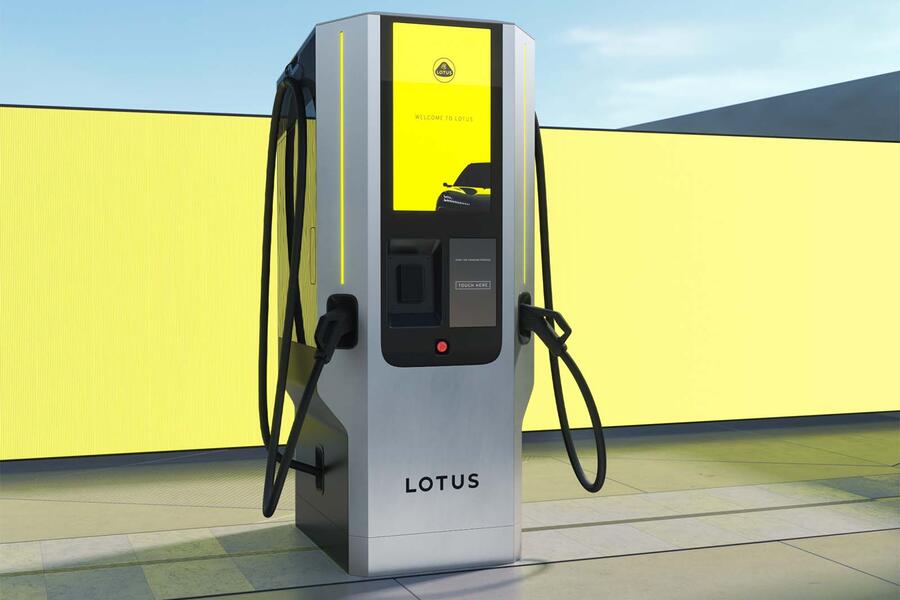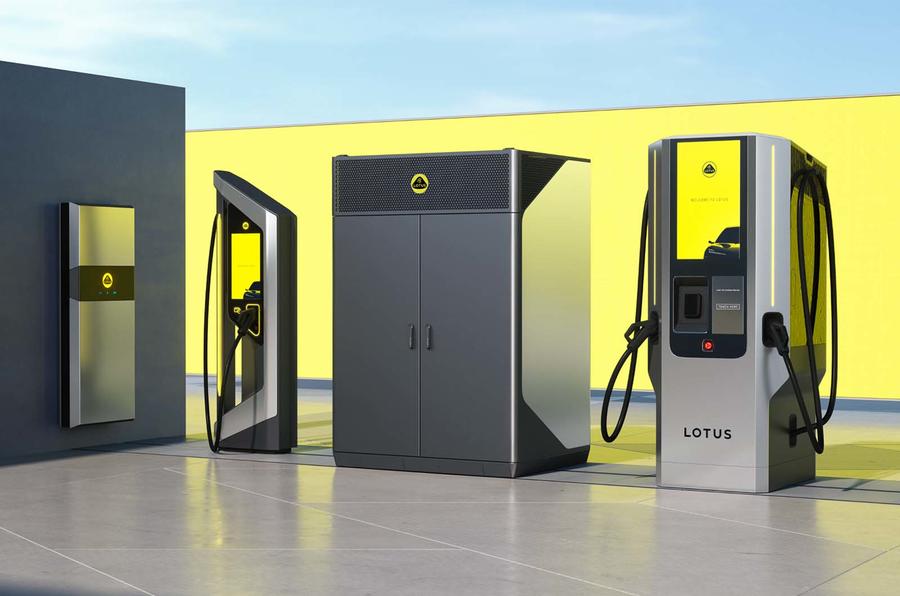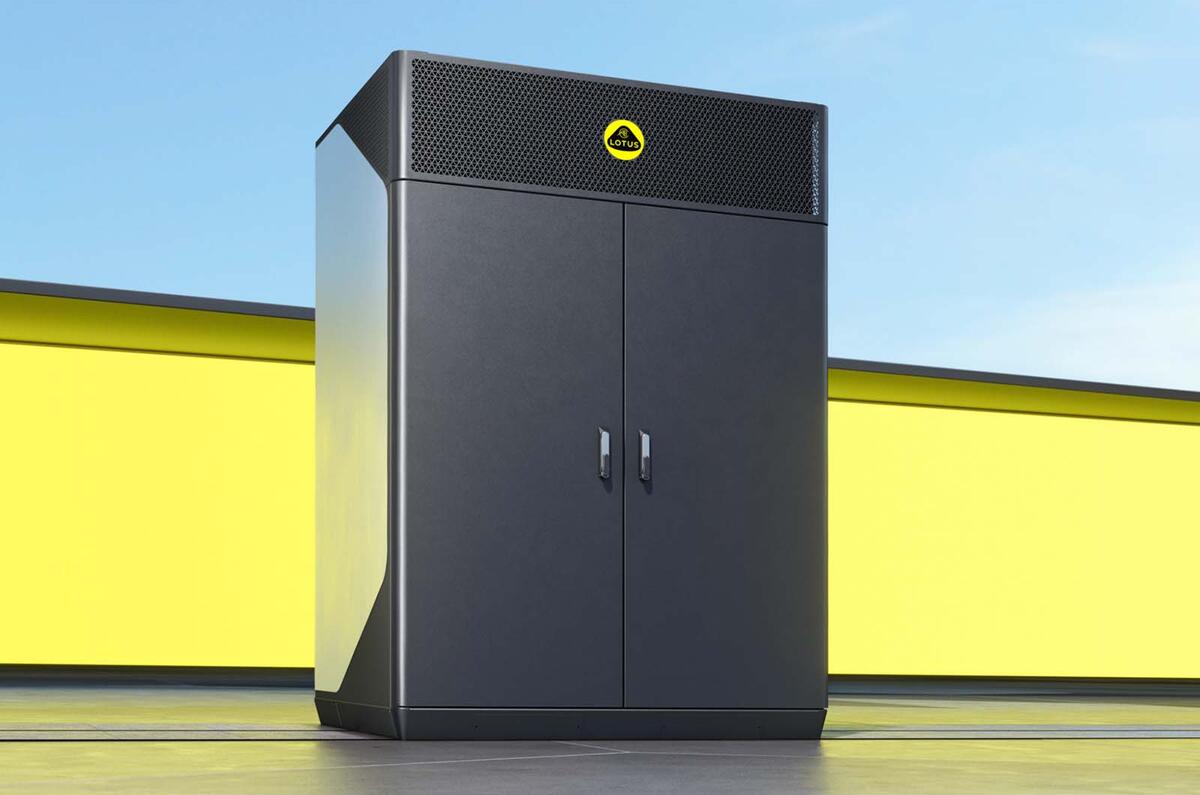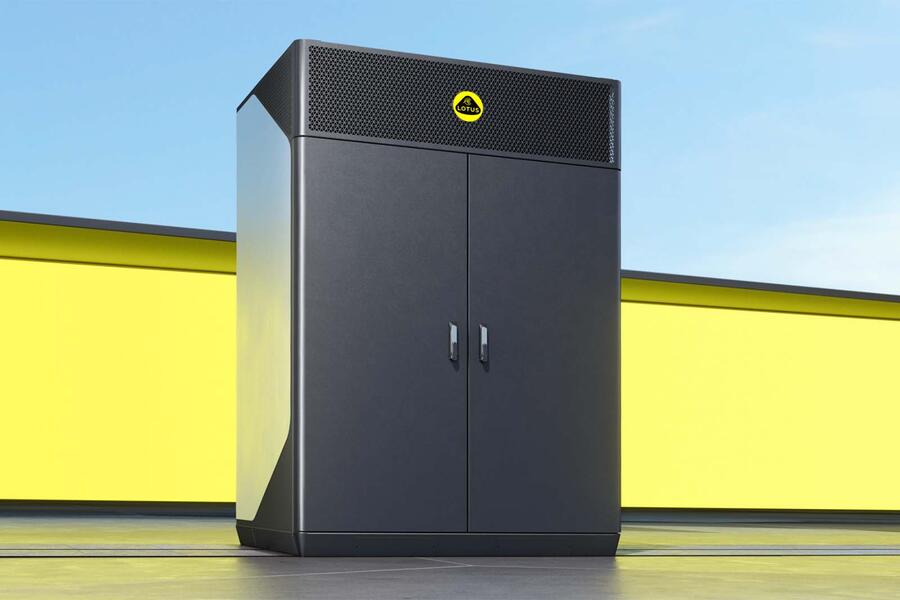Lotus has unveiled a Tesla-rivalling 450kW electric car charger that can add more than 80 miles of range in five minutes.
Bound for Europe early next year, the charger has been designed primarily for "charge point operators, fleet providers and dealerships".
The technology is likely to be rolled out in select areas, with multiple chargers in each location; motorway service stations are earmarked.
The system, which won’t be locked to Lotus owners, is able to charge up to four cars at once, although typical charges are limited to two fast-charging outputs. While any EV can use them, Lotus has said the system will be "particularly effective" on cars equipped with 800V charging hardware.
Each system comprises a “market-leading” 450kW direct current (DC) charger, power cabinet and charging unit. Currently, the UK’s most powerful EV charger is run by Gridserve, operating at a maximum rate of 360kW and taking 15 minutes to add 100 miles of range.
Coolant is sent through the charging connector to allow for hotter temperatures and therefore higher charging speeds – technology that Lotus believes will futureproof it.

When tested on the new Lotus Eletre R SUV, the DC charger added up to 88.5 miles of range to the battery in five minutes, making it one of the fastest EV chargers on the market today.
In comparison, Tesla’s Superchargers take the same time to add 75 miles of range.
The Lotus system can also top up a battery from 10% to 80% in 20 minutes. The firm says it will offer the charger as an upgrade to its existing customers who already have a charger installed.

















Join the debate
Add your comment
Not quite sure it's a "Tesla rival"? The beauty of Tesla's supercharger network lies in the wide network and integration with the car - not the peak charging power as such.
I don't deny it's a welcome addition, but it's horses for courses. Slow charging works well overnight at home, and on a motorway a 30 minute charge stop works well as well. (Gives chance to have a coffee and go to the toilet.) On a motorway I'd rather have more somewhat slower chargers?
Good idea from Lotus.
It was the Supercharger network that made my Tesla S a viable proposition.
I use about 6kw of electricity a day in my home. So this one charger is going to need the same sort of supply as a small housing estate, to charge 1 car. And its unlikely the unit will sit there all by its self. I hope Lotus will shortly be showing the small power station we are going to need to sit next to these wonderful chargers
The anti-EV folks are getting more and more ridiculous. Go get some fresh air, dude.
Not necessarily. The expectation is that a charger with that sort of power will have it's own storage battery, charging quite slowly when a car isn't there, but ready for output when needed. Same principle as a header tank for water.......